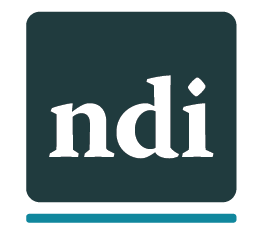“The more that you read, the more things you will know. The more that you learn, the more places you’ll go.” – Dr. Seuss
March is National Reading Month! Staff members at National Disability Institute (NDI) often turn to books for inspiration and guidance as they work to fulfill our organization’s mission: to advance the economic futures of people across the spectrum of disabilities. This month, our staff members are sharing some of their favorite books about disability issues and financial empowerment. Put these on your “To Read” list, because these books come highly recommended!
1. “Count Us In: Growing Up with Down Syndrome” by Jason Kingsley and Mitchell Levitz
At ages 19 and 22, respectively, Jason Kingsley and Mitchell Levitz shared their innermost thoughts, feelings, hopes and dreams, their lifelong friendship and their experiences growing up with Down syndrome. Their wit, intelligence, candor and charm make a powerful statement about the full potential of people with developmental disabilities, challenging prevailing stereotypes. – Nancy B.
2. “The Unbanking of America: How the New Middle Class Survives” by Lisa Servon
The author takes you deeply into the world of check cashing stores and payday lenders to connect with the stories of millions of Americans who live paycheck to paycheck and in spiraling debt. They explain why they use outside mainstream financial services to access small dollar loans to survive, and which surprisingly gives them a level of customer service that makes them feel valued…compelling and eye opening! – Michael M.
3. “My Stroke of Insight: A Brain Scientist’s Personal Journey” by Jill Bolte Taylor
In this book, Jill Bolte Taylor – a brain scientist – describes having a massive stroke and her long recovery process. This experience taught her that if a person actively chooses to promote positive thoughts and physical well-being, then he or she can live in a state of inner peace. – Margaret B.
4. “Savage Inequalities: Children in America’s Schools” by Jonathan Kozol
In “Savage Inequalities,” Kozol delivers an examination of the extremes of wealth and poverty and calls into question the reality of equal opportunity in our nation’s schools. I read this book in graduate school as an idealist, who believed that things change over time for the better, only to learn otherwise. It was a necessary lesson and one that has informed all current and future thinking. There is a quote from the book that has had the greatest impact on me, especially as an idealist: “People look for beauty even in the midst of ugliness. It rains on my city, said an eight-year-old, I know, but I see rainbows in the puddles.” Now, I strive every day to see rainbows in my puddles! – Laura G.
5. “The Next Progressive Era: A Blueprint for Broad Prosperity” by Philip Longman and Ray Boshara
This book is not disability specific, but it frames the poverty issue so wonderfully on things that need to change. It really provides valuable talking points when discussing financial stability. The ideas apply to the disability community as well. This is by far one of my favorite books and I reference it often in trainings. – Michael R.
6. “Raymond’s Room: Ending the Segregation of People with Disabilities” by Dale DiLeo
DiLeo’s message is loud and clear. It is time to end the ‘us and them’ mentality in every dimension of our society. Living, working, playing and participating in life to the fullest is the right of every citizen, regardless of disability! – Nancy B.
7. “A is for Activist” by Innosanto Nagara
This book focuses on kids learning advocacy. The rhyming and pictures are awesome for children, while the issues it brings up resonate with my family’s values of community, equality and justice. This book inspires hope for the future and calls children to action! My kids love it! – Jamie R.
8. “Give Us Credit” by Alex Counts
I met someone in a community orchestra who recommended that I read this book. I had been asked to start a micro-loan program and found this book inspiring. It helped me to understand that it is especially important that people who have limited income take steps to develop good credit as a means to stop the cycle of poverty. It is amazing how people can build good credit and secure assets that propel them forward. People simply need guidance, access to affordable credit and the vision that they can take steps to better their situation today and establish economic self-sufficiency and economic stability for their futures. – Laurie S.
9. “Souls in Extremis: An Anthology on Victims and Victimizers” by Burton Blatt
Burton Blatt’s “Souls in Extremis: An Anthology on Victims and Victimizers” is a compelling compilation of Blatt’s observations and insights into the experiences of people with intellectual disabilities, and the staff and administrators in institutional settings in which they lived. Blatt combines data, poetry, scholarly analyses and personal experiences to paint a picture that motivated generations of change agents. – Rebecca S.
10. “The Total Money Makeover: A Proven Plan for Financial Fitness” by Dave Ramsey
Ramsey says throughout this book, “If you will live like no one else, later you can live like no one else.” Debt is not a death sentence, and you can eliminate debt in your life, and build wealth. This book is not complicated, in fact, it contains simple, common sense steps to lead people to financially secure lives. – Nancy B.
Note: The opinions expressed in this article are those of the contributors and do not necessarily reflect the official policy or position of National Disability Institute (NDI).
